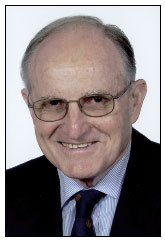Servicios Personalizados
Articulo
Indicadores
Links relacionados
-
 Citado por Google
Citado por Google -
 Similares en Google
Similares en Google
Compartir
SAMJ: South African Medical Journal
versión On-line ISSN 2078-5135
versión impresa ISSN 0256-9574
SAMJ, S. Afr. med. j. vol.99 no.2 Pretoria feb. 2009
FROM THE EDITOR
In favour of shorter medical training
By decimating his workforce, yellow fever and malaria scuppered the attempt by Ferdinand de Lesseps, who had successfully developed the Suez Canal, to build the Panama Canal. William Gorgas, surgeon general of the US army, assisted by A J Orenstein, who later had a large influence on South African health services and was head of its medical services in World War II, enabled the USA to complete the Panama Canal in 1914 by eliminating mosquitoes. Walter Reed had made this possible in 1900 by confirming the theory of a Cuban doctor, Carlos Finlay, that yellow fever was transmitted by mosquito bites. Some of his close colleagues died after voluntary exposure to mosquito bites - the ultimate controlled trial!
Walter Reed, after 2 years of medical studies at the University of Virginia, graduated MD at the age of 17 and obtained a second MD a year later in New York. His subsequent outstanding career in the US army and in pathology and microbiology has been recognised by numerous institutions and awards named after him. The training of doctors in the USA at that time was haphazard and often downright dangerous. The reports in the early 20th century of the educationist Abraham Flexner dramatically changed that and influenced the world of medical education throughout the world. One side-effect was the closure in the USA of many inadequate medical schools for women and for blacks. Flexner emphasised the importance of science in medical education and introduced many other initiatives that are still relevant today.
The explosion of medical knowledge and the need for time for adult socialisation to become a medical professional have led to a generally accepted global medical training, illustrated by the international medical education standards in Basic and Postgraduate Medical Education and Continuing Professional Development of the World Federation for Medical Education (www.wfme.org). These developments and the growth of medicine make it obvious that the kind of medical training that Walter Reed experienced would be hopelessly inadequate to train a recognisable doctor today. Furthermore there are now many well-developed professions allied to medicine that did not exist a century ago (and a growing number of wacky belief systems that defy logic). But what is a reasonable time for doctors to complete their training? Should modern medicine not rethink some of its training systems and prejudices?
Let us examine the realities in South Africa. The young matriculant enters medical school and typically undergoes a 6-year undergraduate training programme. Some years ago the Department of Health (DoH) and some zealous educationists in the Health Professions Council extended internship to 2 years, arguing that newly graduated doctors lacked skills and that they needed practical supervised exposure to all the major disciplines. The DoH also needed to plug the gaping holes in its public services and introduced a further year of compulsory community service (theoretically also under supervision). If our still enthusiastic young doctor wishes to enter family practice or one of the other specialties, he or she often has to mark time for a year or two before admission to an accredited training post. To register as a specialist requires proof of having completed a minimum of 4 years in an approved post and being in possession of a recognised relevant higher qualification (several specialties have pleaded for mandatory additional time). Many of the specialties have sub-specialties that require a further 2 years in an approved post and a further examination hurdle (cardiologists asserted that 2 years was insufficient experience in their sub-specialty and pleaded for a minimum of a further 4 years on top of the basic specialty). If there are no hitches along the way it therefore takes a minimum of 13 years for a young specialist to get on the register, and 15 years for a sub-specialist (further years are often added by examination hitches or lack of training posts). Only now can the no longer young doctor commence becoming a true expert in his or her chosen field.
The obstacle course I have outlined came about because of advances in medical knowledge and new training simply being added to the existing programmes.
Financially this is ludicrous, as practitioners are typically saddled with major financial loans and can only begin paying them off at a late stage in their career, let alone making provision for retirement. Another compelling reason for change is the recent recognition that for any cognitively complex field some 10 000 hours or 10 years, given 4 hours per day, is required to be good at your field (at 4 years of age Wolfgang Amadeus Mozart and Tiger Woods were beginning their respective careers in music and golf).
Specialties and sub-specialties (e.g. ophthalmology, cardiology and others) lend themselves to a radically different educational approach, such as complete 6-year courses commencing from matriculation. Such a route would be efficient by eliminating swathes of marginally useful experience requiring much supervision, would enable practitioners to gain real expertise while their manual dexterity is still excellent, and would be financially beneficial for practitioners and the public.

J P van Niekerk
Managing Editor














